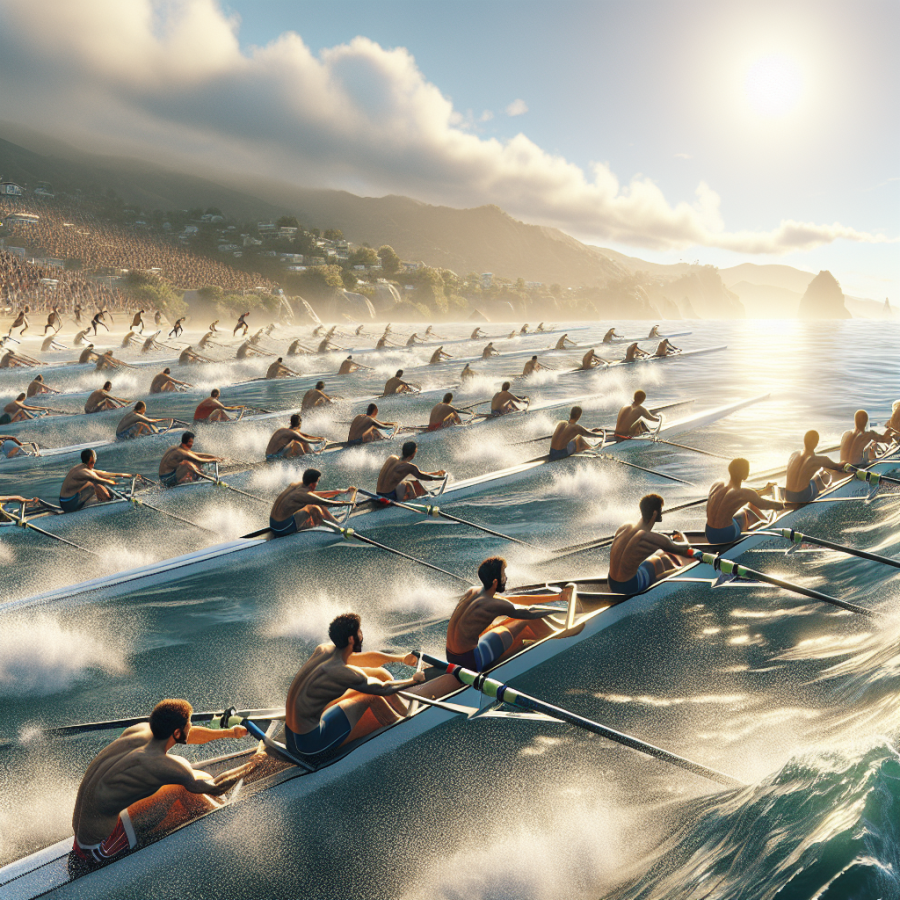Navigating the Deep Blue: Mastering the Challenges of Open Ocean Rowing
Rowing in the open ocean presents an array of unique challenges that are markedly different from those faced in coastal rowing or racing on rivers and lakes. The sheer unpredictability of the ocean environment demands a level of preparation, skill, and mental fortitude that is unparalleled in other forms of rowing.
One of the first and foremost challenges in open ocean rowing is the weather. Conditions can change rapidly at sea, with the potential for rowers to face everything from stifling heat to chilling cold, not to mention the high winds and squalls that can churn the water into a dangerous froth. To master these weather extremes, rowers must be well-versed in meteorology and understand how to read the signs of impending weather shifts. They also need to be equipped with the right gear to protect against the elements, including proper clothing, desalination equipment for fresh drinking water, and a sturdy vessel that can withstand harsh sea conditions.
Navigation is another critical challenge in the vast expanses of the ocean. Unlike river rowing, where the course is often clear, ocean rowers must be adept at using GPS systems, compasses, and star navigation to maintain their course. This is especially true when visibility is low, such as in fog or during the night. An understanding of ocean currents and the ability to use them to one's advantage can also make a significant difference in the success of an ocean rowing expedition.
Physical and mental endurance are put to the ultimate test in open ocean rowing. The constant motion of the waves and the need to maintain a steady rowing pace for days or weeks on end can be grueling. Rowers must be in peak physical condition to handle the demands of the workout and have the mental resilience to push through the boredom, isolation, and fatigue that come with long stretches at sea.
The equipment used for open ocean rowing must also be specially designed to handle the conditions. Ocean rowboats are built to be self-righting in case of capsizing and are typically equipped with watertight cabins for shelter. They must also be crafted to minimize drag while maximizing stability. All gear brought on board has to be corrosion-resistant, securely stored, and carefully chosen to balance utility with the constraints of space and weight.
Safety is an omnipresent concern in open ocean rowing. Rowers must be prepared for any emergency, from medical issues to equipment failure.
Read also:
The Classic High Striker: Test Your Strength at the Fair
Conquering the Coastline: The Thrill and Techniques of Coastal Rowing
Coastal rowing, a dynamic and rapidly growing water sport, offers a unique blend of adventure, challenge, and the opportunity to connect with the ocean in a powerful way. Unlike its flatwater counterpart, coastal rowing exposes athletes to the raw elements of nature, where the unpredictable sea conditions heighten the need for skill, endurance, and adaptability.
Thriving in varied conditions requires mastering the techniques that allow rowers to navigate through choppy waters, strong currents, and high winds. Here, we delve into some of the key strategies and skills essential for conquering the coastline in a rowing shell.
Understanding the Environment:
It all starts with a deep understanding of the coastal environment. Rowers must learn to read the weather patterns, tides, and wave formations. Knowledge of the local geography, including the presence of reefs, sandbars, and shipping lanes, is also critical. Before setting out, successful coastal rowers analyze these conditions to anticipate and tackle the challenges ahead.
Equipment and Boat Handling:
The design of coastal rowing boats is adapted to withstand rough sea conditions. They are more robust and have a self-bailing design to deal with water ingress. Familiarity with this equipment, including the correct set-up of the foot stretcher, oar length, and rigger settings for stability in high waves, is vital.
Rowers must also refine their boat handling skills. Quick, decisive maneuvering helps in avoiding collisions with obstacles like buoys or debris, and steering effectively through rough waters. This can include learning how to ride the swells to gain speed or recognizing when to reduce stroke rate to maintain control in heavy chop.
Technique Adaptations:
Coastal rowing demands a modification of technique. Rowers often employ a shorter, more powerful stroke than on flat water, focusing on maintaining momentum. The recovery phase is adjusted to account for boat movement with the waves, and the stroke sequence may need to be adapted on the fly in response to the sea's rhythm.
Moreover, the coastal rower needs a robust catch to ensure that the blade enters the water cleanly despite the boat's vertical movement. Maintaining a strong core is essential to minimize energy loss through excessive upper body movement.
Physical and Mental Endurance:
The physical demands of coastal rowing are significant. Rowers must have the strength and endurance to maintain technique over longer distances and through taxing conditions.




